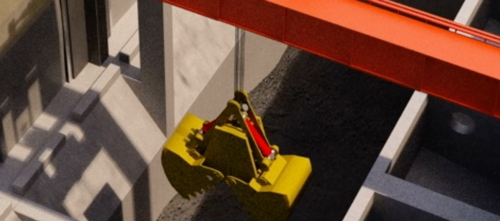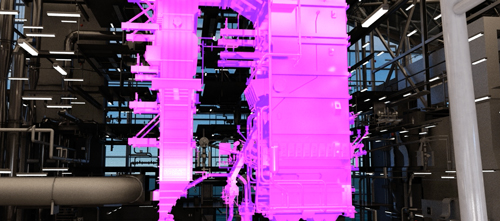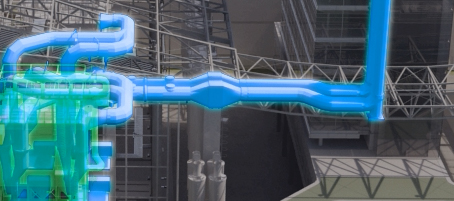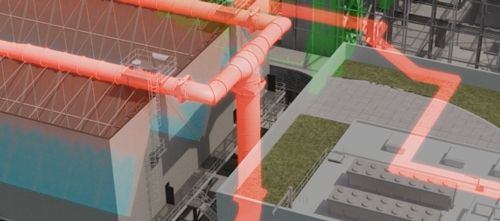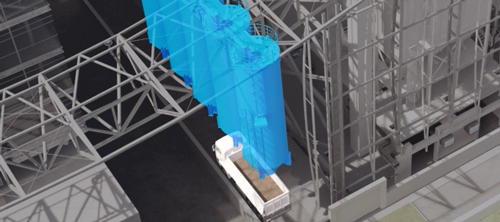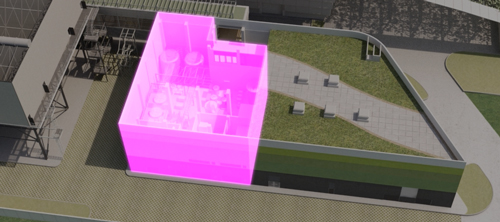WASTE-TO-ENERGY
RECEPTION
Plant
GENERATION
Generator
TREATMENT
cyclone
Reactor
Filter
HANDLING
SLUDGE TREATMENT PROCESS.
Truck passes through the weighbridge to record the weight of sludge received before proceeding to the delivery bay for discharging to the bunker. The enclosed delivery bay is equipped with an advance deodorisation system to prevent odour from escaping. The truck is required to be cleaned and dried before leaving the delivery bay. An automated grabber places the sludge into dedicated hoppers prior to mixing and pumping it into the incinerator.
A proven and high-tech thermal technology known as fluidised bed incineration is adopted to treat the sludge through high efficient combustion. The thermal gases in the incinerator reach a temperature above 850˚C for at least 2 seconds to control the formation of organic pollutants. The treatment process considerably cuts the volume of waste to be disposed of in the landfills by up to 90% and reduces greenhouse gas emission into the atmosphere.
Highly effective flue gas cleaning system is used to remove particulates and pollutants in the flue gas. The series of treatment comprises the multi-cyclone, the dry reactor and the bag filter where large and fine particles are removed and acidic gases, organic pollutants and heavy metals are neutralised or captured. The cleaned flue gas is constantly monitored by a Continuous Emission Monitoring System (CEMS) to ensure full compliance with stringent international emission standards.
The incinerator acts like a boiler with a large number of water pipes surrounding its walls. The heat energy generated by the incineration process boils the water to produce steam, which then passes through a turbine to generate electricity. Steam condenses and becomes water again. It will then return to the incinerator to repeat the power generation process.
Inert ash and residues collected after the incineration and flue gas treatment processes are temporarily stored in silos. They are then tested to ensure full compliance with the treatment standards before sending to the adjacent West New Territories Landfill for disposal. By reducing the original sludge volume by up to 90%, the facility achieves a substantial decline on landfill loading.
An advanced desalination plant is used to purify seawater drawing from the nearby Deep Bay to provide potable and process water, while rainwater is collected for non-potable use. The facility achieves “zero effluent discharge” through the deployment of a compact wastewater treatment system that allows all wastewater to be collected, treated and reused on-site for irrigation, flushing and cleansing purposes.
